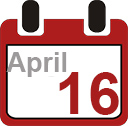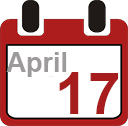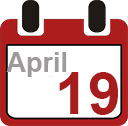ConVEx Baltimore Presentations
The ConVEx Baltimore program offers career-empowering knowledge, practical solutions, best practices, and the best networking in the industry.
IMPORTANT PROGRAMMING NOTE
The lineup and schedule posted here are based on current commitments from presenters and are subject to change.
Wednesday ~ April 19, 2023
DITA for Sales People
Just as tech docs departments use DITA to provide relevant content to users , sales and marketing departments can benefit from the same techniques to target their content appropriately. In this case study, we look at how Cisco went from using proposal templates in Microsoft Word to automating the production of personalized sales proposals using DITA
Neil Thomas, Cisco & Jackson Klein, Stilo Corporation

Neil is a lifetime participant in the evolution of the telecommunications industry. He contributed 28 years to developing, integrating, supporting, and demonstrating Nortel solutions for Fortune 100 customers worldwide. For the past 9 years, Neil has focused on Cisco Sales Enablement through bid management and proactive custom proposal development. He is currently leading both our proposal content developers, and our Global Bid Management teams. Neil’s focus on the delivery of automation solutions for digital sales, including the Sales Proposal Generator (SPG), is helping to drive cost and time efficiencies into our sales processes and to enable seller success.

More than 20 years of providing technical leadership, strategic direction and oversight for successful planning and execution of all stages of R&D, product development and lifecycle. Managed and led R&D teams to develop and launch products in the field of design, simulation and analysis of photonic integrated circuits, communication systems and networks.
Scaling the Everest of Link Refactoring
What are the impacts of “keyification” to authoring, training, and publishing? How do you automate a massive refactor involving over 100k topics and minimize manual rework? Learn how our team scaled an “Everest” of link refactoring as we implemented keys to meet business and customer needs.
Eliot Kimber & Scott Hudson, ServiceNow

Eliot Kimber is a Senior Staff Content Engineer at ServiceNow. Eliot has worked with generalized markup for a very long time. He is one of the founding members of the W3C XML Working group and a founding member of the DITA Technical Committee, as well as co-editor of HyTime 2nd Edition and author of DITA for Practitioners (XML Press).

Scott Hudson is a Staff Content Engineer at ServiceNow. He is also a long-time member of the OASIS DocBook and DITA Technical Committees. He specializes in content architecture, optimizing the DITA authoring experience, creating author assistance using Schematron and Vale, and evaluating new information technologies. He is a shameless Sci-Fi geek and FIRST robotics mentor.
Links in DITA and Output
Not much can be done in DITA without considering linking. Linking enables weaving DITA topics into maps and other relationships. In this talk we look at DITA linking and discuss implications for CCMSes, DITA output and DITA output delivery.
Jim Tivy, Bluestream

Jim Tivy is the CTO at Bluestream and a product architect of the XDocs CCMS. In 1999, he developed the first commercial XML database called XStreamDb. In the past Jim was a member of the W3C XQuery Working Group and currently is a member of the OASIS DITA TC.
Making the Most of Difference
Content publishers such as standards bodies, hardware manufacturers, and training providers are creating extra value for customers by publishing redline output alongside the latest document updates. But is your workflow set up to leverage change in this way? What might you need to consider during creation and publishing to make the most of the difference in your content?
Tristan Mitchell, DeltaXML
 Tristan is Product Director at DeltaXML, a technology company with world-leading software products for the management of change in structured content. He has a deep understanding of DeltaXML’s product suite and loves to help customers to create extra value in their content using change management. Tristan is a father to three daughters, a movie-lover, and a keen runner.
Tristan is Product Director at DeltaXML, a technology company with world-leading software products for the management of change in structured content. He has a deep understanding of DeltaXML’s product suite and loves to help customers to create extra value in their content using change management. Tristan is a father to three daughters, a movie-lover, and a keen runner.
Publishing in the Cloud: Managing high-volume publishing for OCI Documentation
At OCI, we use cloud tools to publish and serve documentation about Oracle Cloud Infrastructure. In this session, Robert will describe how those tools are used to publish hundreds of thousands of pages per week: where does the content come from, and how does it make it to the site? What have we managed to automate, and how much is still manual? How do we support a mix of DITA based documentation with other content formats? Most importantly, where have we run into trouble along the way? Attendees are encouraged to share their own experience with similar tools, or advice on how to deal with trouble spots when working with similar systems.
Robert Anderson, Oracle

Robert Anderson has been working with DITA and DITA-OT from the beginning. He now supports cloud-based publishing tools for Oracle Cloud Infrastructure and maintains the site that hosts OCI Documentation. He is currently co-editing the DITA 2.0 specification, and excited to see what comes next.
Consistency vs. Flexibility: Designing DITA-OT outputs
Great benefits of structured authoring include the separation of form and content and automated publishing. No more wrestling with formatting! This not only saves time, but it increases the visual consistency of the formatting. But, as we all know, there are exceptions to every rule. So how do we balance the benefits of automated publishing with the flexibility necessary to accommodate the variety of scenarios for which create content? We’ll discuss!
Brianna Stevens, Comtech Services

Brianna Stevens joined Comtech as a Consultant in 2015 and immediately became an expert in creating and implementing DITA constraints. Brianna’s design education gives her unique insight into visualizing the content challenges facing our customers. Her outgoing personality puts people at ease, making her an ideal consultant to involve in user and benchmark studies and competitive analyses. In addition to consulting, Brianna does graphic design for the CIDM and Comtech websites, advertisements, and publications.
Managing Change in Challenging Times
Change is a constant in information development. And with the endless talk of recession, and major tech companies downsizing, change becomes more imminent and challenging. Budgets will tighten and teams will need to adapt and change to meet demands. This presentation will share strategies and practices that can be employed to avoid stress and burnout at all levels.
Pat Burrows, Independent

Pat Burrows has led multiple global teams in content development, tools, and information architecture, and has helped large and small organizations “think inside the box” about the creation and delivery of content. Her passion for change management and leading shifts in mindset has motivated teams to define and deliver future-state results, often in record time, while navigating organizational politics.
Don't Throw the Baby Out With the Bathwater
DITA is established as a powerful and mature technology for managing technical content. Presentation of DITA content, especially online presentation, however, has lagged modern user experience (UX)/customer experience (CX) expectations. This discrepancy has led some organizations to abandon DITA in favor of alternatives such as headless CMSs. This approach gains presentation capabilities to support a powerful UX/CX, while losing the benefits of DITA for managing the technical content. In this presentation, Bob Johnson advocates for integrating DITA content into headless CMSs, gaining the benefits of both systems to create a robust UX/CX.
Bob Johnson

Bob Johnson has worked as a technical writer and content strategist for twenty-five years, has worked with DITA since 2006, and has led multiple DITA migrations and CCMS acquisitions. Bob worked for WCM vendor Percussion Software for more than ten years. Percussion developed a headless WCM long before headless was cool.
Between Competition and Collaboration
In recent years the software industry has seen a rising trend towards lightweight documentation on the side of SMEs. While this may work on a small scale, it may get tricky when there is a need to interact with more corporate documentation environments. Bridging the gap between markup and markdown can present challenges not only on the technical level. Enter a scenario in which you need to pull markup-agnostic content contributors to the other side and learn how Lightweight DITA might help you to foster collaboration instead of deepening competition.
Frank Wegmann, Software AG
 Frank Wegmann has 20+ years of experience in the markup world. At Software AG, he has been advancing custom automated build systems for technical documentation since 2001, in recent years with more focus on DITA. He is a regular speaker at international conferences and engaged in OASIS DITA committees, now also as co-chair of the Lightweight DITA subcommittee.
Frank Wegmann has 20+ years of experience in the markup world. At Software AG, he has been advancing custom automated build systems for technical documentation since 2001, in recent years with more focus on DITA. He is a regular speaker at international conferences and engaged in OASIS DITA committees, now also as co-chair of the Lightweight DITA subcommittee.
Topic Templates Instead of Specialization
Consistent content structure is a hallmark of a DITA implementation, but you may need a special structure for certain types of content. Specializations of the DITA DTD are often the solution, but do you want to deal with the overhead of maintaining and upgrading a specialization? Instead, you can create topic templates to drive structure and presentation.
Rob Vaglia, Contiem
 Rob Vaglia started with DITA at IBM in 2003 and has held almost every role in a DITA implementation team. As Vice President of Solution Architecture at Contiem, Rob works with clients to determine their business needs for content creation, management, and delivery.
Rob Vaglia started with DITA at IBM in 2003 and has held almost every role in a DITA implementation team. As Vice President of Solution Architecture at Contiem, Rob works with clients to determine their business needs for content creation, management, and delivery.
Content Governance Strategies for Regulated Environments
Many companies recognize the time- and cost-saving benefits of a CCMS and choose to implement one within their organization. However, even the most powerful tools and the best of intentions do not always lead to success without a strong change management strategy. In this session, we will discuss CCMS governance best practices to ensure a successful rollout and sustained ROI.
Jonathan Young, Waters & Josh Steen, RWS

Jonathan Young is a Content Strategist at Waters Corporation, where he has held various roles in the technical content field. For the past 30 years he’s helped companies in the scientific and technical industries create technical content, optimize processes, and implement technology to meet the business challenges of designing and deploying great content experiences.
 Josh Steen is a Principal Business Architect at RWS where he designs content management solutions and CCMS deployments for RWS Tridion. Previously, Josh was a Process and Technology Manager at Waters and a Documentation and Training Manager at McKesson. Josh has a master’s degree in Technical Writing from Northeastern University and 20 years of experience managing content for regulated industries.
Josh Steen is a Principal Business Architect at RWS where he designs content management solutions and CCMS deployments for RWS Tridion. Previously, Josh was a Process and Technology Manager at Waters and a Documentation and Training Manager at McKesson. Josh has a master’s degree in Technical Writing from Northeastern University and 20 years of experience managing content for regulated industries.
Content People Management
Successful content management is a balance of applications, structured content, workflows, and (most importantly) people. This presentation will focus on the human component: the tech writers, developers, management, and the interactions among them. Using caricatures but drawn on real-world experience, I will emphasize the importance of understanding expectations and aligning incentives — especially relevant during a possible recession and tight labor market.
Tom Comerford, Supratext

Tom Comerford is co-founder and director of Supratext LLC, which provides system requirements analysis, design, implementation, and maintenance of content management and publishing systems. He has over three decades of experience in the application of technology and information management to commercial and technical publishing.
Harmonizer: Identify and Resolve Content Redundancy
Harmonizer, by DCL, is a software application that analyzes document collections using NLP to identify redundant content. Join DCL in the Test Kitchen and see how Harmonizer simultaneously analyzes across any file format (XML, HTML, SGML, Word, Framemaker, InDesign, PDF, and others) and is invaluable when planning a content reuse strategy or moving content to a new platform.
Christopher Hill, Data Conversion Laboratory
 Christopher Hill is the Technical Product Manager for Harmonizer at Data Conversion Laboratory. Chris is an experienced IT professional who started programming in the 1980s. Since the early 2000s, Chris’s experience includes work as a support engineer, product manager, and user interface designer, helping organizations transition data and content to modern digital formats and platforms.
Christopher Hill is the Technical Product Manager for Harmonizer at Data Conversion Laboratory. Chris is an experienced IT professional who started programming in the 1980s. Since the early 2000s, Chris’s experience includes work as a support engineer, product manager, and user interface designer, helping organizations transition data and content to modern digital formats and platforms.
Oxygen XML add-ons for Technical Writers
Oxygen XML Editor and Oxygen XML Author can be enhanced by installing add-ons. There are quite a number of free and useful add-ons for technical documentation writers and we will explore some of them:
– Git Client add-on – Collaborate with your colleagues on a Git project.
– Content Fusion Connector Add-on – Create review tasks for collaborators and subject matter experts.
– Feedback Comments Manager – Receive and manage feedback from the web site documentation directly in the application.
– Batch Documents Converter – Convert various document formats like MS Word, Markdown, Confluence, OpenAPI to DITA XML.
– Terminology Checker Add-on – Define terminology rules specific for your application or use rules already implemented in Vale.
– Fluenta DITA Translation Add-on – Create translation projects and convert DITA XML to XLiff and back using the Fluenta libraries.
– Smart Autocomplete Add-on – Use OpenAI or ChatGPT to enhance your editing experience.
– Live Tutorials Add-on – Create or explore already available tutorials to learn various Oxygen features.
Radu Coravu, Syncro Soft / Oxygen XML Editor
 Radu Coravu is a DITA XML expert working for oXygen XML Editor. His main focus is in the development of the visual XML Author editing environment and the specific-DITA support provided by oXygen. He provides support for complex integrations and helps steer the product in the right direction, all this with some development on the side.
Radu Coravu is a DITA XML expert working for oXygen XML Editor. His main focus is in the development of the visual XML Author editing environment and the specific-DITA support provided by oXygen. He provides support for complex integrations and helps steer the product in the right direction, all this with some development on the side.
Practical ChatGPT and other large language models: A technical how-to discussion with a working PoC
The world is all abuzz about ChatGPT and generative technology which has burst onto the scene in recent months. Few truly understand how these generative technologies really work beyond the surface cocktail party chatter, wild claims, and baseless prognostication. Michael and his team don’t just talk – they’ve walked-the-walk and have used the OAS OpenAPI and Python to build a private model of ChatGPT using their own content corpus and learned a great deal in the process. In this session, Michael will share the knowledge his team gained, explain how it relates to our work with intelligent content, and how he and others in the field of knowledge engineering believe that semantic technologies hold the magic key to reliable and trustworthy generative technology to support content-as-a-service (CasS).
Michael Iantosca, Avalara Inc.

Michael Iantosca is the Senior Director of Content Platforms at Avalara Inc. Michael spent 38 of his 42 years at IBM as a content professional and pioneer – leading the design and development of multiple generations of advanced content management systems and technology that began at the very dawn of the structured content revolution in the early 80s. Dual trained as a content professional and systems engineer, he led the charge building some of the earliest content platforms based on structured content. Michael formed the team at IBM that developed DITA XML, began his foray into AI starting Expert Systems in the early 90s, followed by computational linguistics, IBM Watson, and knowledge engineering. Michael formed the Semantic Content Graph Guild (SCGG) that meets monthly and whose work is key the future of AI and ML-driven content and generative technologies.
Omnisource and Omnichannel: Your Content GPT must be an Omnivore
We’re enchanted by the answers delivered by GPT, but the answers are only as good as its diet. Federation of content is no longer sufficient. You need content orchestration and ingestion for GPT to thrive. And you need to be sensitive to your users’ content restrictions through strict governance. Visit this Kitchen to see how Zoomin cooks up a varied diet consisting of all major content food groups: documentation, knowledge articles, community discussions, learning and training, topped off with a dose of API devdocs. See how ZoominGPT can serve your customers answers wherever they go – even inside your product.
Joe Gelb, Zoomin

Joe Gelb President and Co-Founder Joe Gelb has more than 25 years of experience helping enterprises implement and capitalize on customer-facing technical content. At Zoomin, he and his team has spearheaded the development of advanced technology solutions for digital experience, helping organizations reduce customer effort by providing personalized and consistent product information at the point of need.
Use-cases using the Oxygen XML Tools
Oxygen provides tools that allow creating content, reviewing it, publishing to different formats and getting feedback from your users. Join George Bina and Radu Coravu to discover how you can combine the Oxygen XML tools to create solutions that integrate with your workflows.
George Bina & Radu Coravu, Syncro Soft / Oxygen XML Editor
 George Bina is one of the founders of Syncro Soft, the company that develops Oxygen XML suite of XML editing, authoring, development, publishing and collaboration tools. He has more than 20 years of experience in working with XML and related technologies, bringing many innovative ideas to reality, contributing to XML-related open-source projects, and presenting at many XML and DITA conferences.
George Bina is one of the founders of Syncro Soft, the company that develops Oxygen XML suite of XML editing, authoring, development, publishing and collaboration tools. He has more than 20 years of experience in working with XML and related technologies, bringing many innovative ideas to reality, contributing to XML-related open-source projects, and presenting at many XML and DITA conferences.

Radu Coravu is a DITA XML expert working for oXygen XML Editor. His main focus is in the development of the visual XML Author editing environment and the specific-DITA support provided by oXygen. He provides support for complex integrations and helps steer the product in the right direction, all this with some development on the side.





